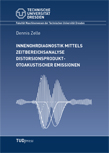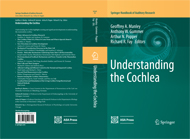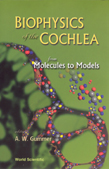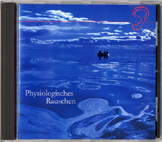The complexity of the inner ear makes it extremely susceptible to damage, so that alone in Europe at least 85 million people suffer from hearing impairment
Hearing loss is the most common sensory disability in the industrialized countries where it affects about 1 in 7 people. Alarmingly, about 1 in a 1000 children is born permanently hearing-impaired, or will develop severe to profound hearing impairment before speech is acquired. The genetic contribution is estimated to be 40-60%. Environmental factors causing hearing loss are infections, ototoxic drugs, acoustical trauma, and ageing. By the age of 80, approximately 50% of the population is afflicted by hearing impairment. Most hearing-impaired persons suffer from sensorineural hearing loss – a malfunction of the cochlea. This is because damaged sensory cells and supporting structures are not replaced spontaneously, as they are for example in the skin. There is no causal therapy for sensorineural hearing loss. There is no differential diagnosis for cochlear hearing loss. Diagnosis and therapy are hindered because we still do not understand the function and dysfunction of the cochlea. Moreover, the appropriate technology is not available.
Our mission in the Section of Physiological Acoustics and Communication is to understand the basis of sound processing by the healthy and pathological cochlea, as well as to develop new tools for differential diagnosis. The Section was founded in 1992 by the Medical Faculty of the University of Tübingen. The founding leader is Anthony W. Gummer. We are a multi-disciplinary research group, consisting of biologists, clinicians, engineers and physicists. Medical doctors are actively involved in research to ensure synergism between research and clinic.
The cochlea is a mechanoelectrical transducer required to transform mechanical vibrations of the middle ear into electrical signals in the auditory nerve. To enable humans to process sound and communicate, this transducer is required to satisfy specifications not yet achieved by any human-made system:
-
detection under a nanometer near auditory threshold of 0 dB SPL
-
operation over an intensity range of 120 dB SPL (a factor of 106)
-
detection of intensity changes of 1 dB
-
operation over a frequency range of 20 Hz to 20,000 Hz
-
detection of frequency changes of 2 Hz in 1,000 Hz
-
operation in noisy environments
These specifications must be achieved by biological structures that are viscous, inherently slow and subject to damage.
We achieve our research goals by:
-
experimentally reducing the cochlea to its individual components, to study its basic mechanical, electrical and molecular properties
-
re-synthesizing the cochlea piece-by-piece, to study the relationship between its components
-
using the results from this basic research to develop new diagnostic strategies
We conduct experiments on:
-
isolated cells and membranes
-
organotypic cultures of the organ of Corti
-
explants of the organ of Corti
-
human subjects, both normal hearing and patients
Our methods include:
-
calcium imaging, using a two-photon confocal laser-scanning microscope
-
nanomechanics, using atomic-force spectroscopy
-
single-unit recordings
-
electrocochleography
-
audiometry, including otoacoustic emissions
-
mathematical modeling
Distortionproduct Otoacoustic Emissions
CD for Tinnitus & Hyperacusis Therapy




